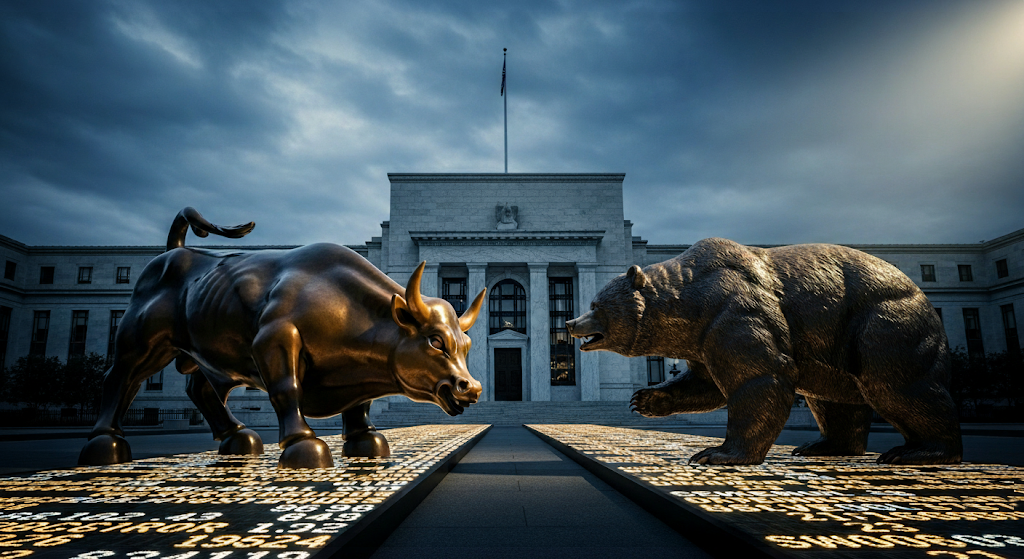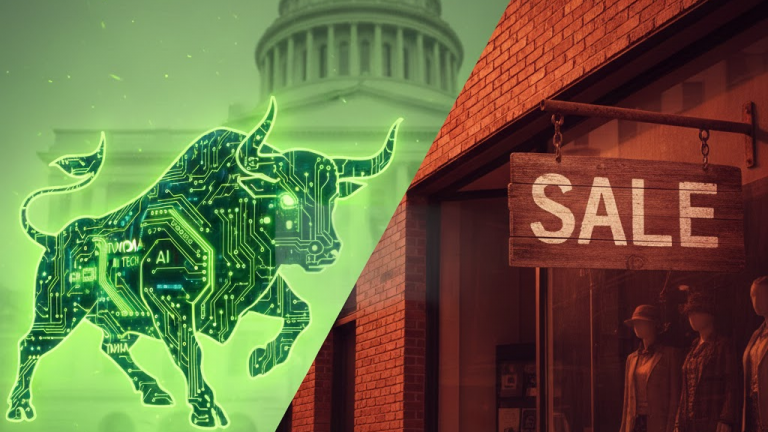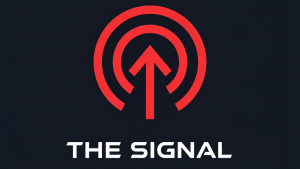The Closing Bell – September 30, 2025
Summary (TL;DR)
For investors, the key takeaway from today is that the stock market is largely ignoring the political drama in Washington, at least for now. Despite the looming threat of a U.S. government shutdown at midnight, major indexes finished the day, the month, and the quarter with gains. The market’s resilience was tested by a notable drop in consumer confidence, revealing underlying worries about jobs and inflation. This development is significant because it creates a tug-of-war: on one side, historical data suggests markets often weather shutdowns well, but on the other, the potential delay of key economic data could leave both investors and the Federal Reserve flying blind in the coming weeks.
What Happened?
U.S. stock markets ended Tuesday on a quiet but positive note, concluding a fifth consecutive winning month for the S&P 500. The S&P 500 rose 0.4%, the Dow Jones Industrial Average gained 0.2%, and the Nasdaq Composite added 0.3%. This calm session occurred as lawmakers in Washington remained at a standstill, with a federal government shutdown set to begin after midnight. Adding to the day’s news, the Conference Board reported that its Consumer Confidence Index fell in September to its lowest level since April, as Americans grew more pessimistic about the labor market and future business conditions.
Why It Matters?
Coming into the final day of the quarter, investors were watching two main things: the political negotiations to avert a shutdown and key economic data for clues about the Federal Reserve’s next move. The drop in consumer confidence was sharper than many economists expected and signals potential weakness in consumer spending, the main engine of the U.S. economy.
The primary concern regarding a shutdown is not its immediate economic impact which is typically modest if the shutdown is short but the delay it would cause in the release of crucial government data.9Reports like the upcoming September jobs report (Nonfarm Payrolls) are vital for the Federal Reserve to assess the economy’s health and decide on future interest rate policy. Without this data, the Fed may lack the clear evidence it needs to justify further rate cuts that many in the market are anticipating.
The Debate (The Bull vs. Bear Case)

The Bull Case (The Optimistic View): Optimists believe the market’s muted reaction is the correct one. Citing historical precedent, analysts at Morgan Stanley Wealth Management note that the S&P 500 has, on average, climbed 4.4% during past government shutdowns. The prevailing view among bulls is that any shutdown will be temporary and its economic consequences will be minimal. They also point to the market’s strong performance, with the S&P 500 on pace for its best September in 15 years, fueled by optimism over artificial intelligence and the high probability of future interest rate cuts by the Federal Reserve.

The Bear Case (The Cautious View): On the other hand, cautious voices point to the potential for this shutdown to be different. Analysts cited by Charles Schwab suggest that underlying economic concerns and worries from foreign investors about U.S. government dysfunction could lead to a more negative market reaction this time. The primary risk they highlight is the uncertainty created by the lack of economic data. A prolonged shutdown could delay the very reports the Fed needs to justify cutting interest rates, potentially leaving markets in limbo and increasing volatility. Furthermore, the decline in consumer confidence is seen as a red flag, indicating that the foundations of economic strength may be cracking.
By the Numbers (Key Data & Metrics)
- S&P 500: Closed up approximately 0.4%.
- Dow Jones Industrial Average: Finished higher by about 0.2%.
- Nasdaq Composite: Gained around 0.3%.
- Consumer Confidence Index: Fell to 94.5 in September, the lowest reading since April.
(This index measures how optimistic or pessimistic consumers are regarding their expected financial situation.) - 10-Year Treasury Yield: Held relatively steady, closing around 4.15%.
- WTI Crude Oil: Fell to approximately $62.15 a barrel, indicating concerns about global demand.
Disclaimer: This article is for informational purposes only and does not constitute financial, investment, or legal advice. The information provided is a synthesis of publicly available data and expert analysis and should not be considered a recommendation to buy or sell any security. Investing in the stock market involves risk, including the possible loss of principal. Past performance is not indicative of future results. Readers should consult with a qualified financial advisor to determine an investment strategy that is suitable for their own personal financial situation and risk tolerance.
Sources:






















